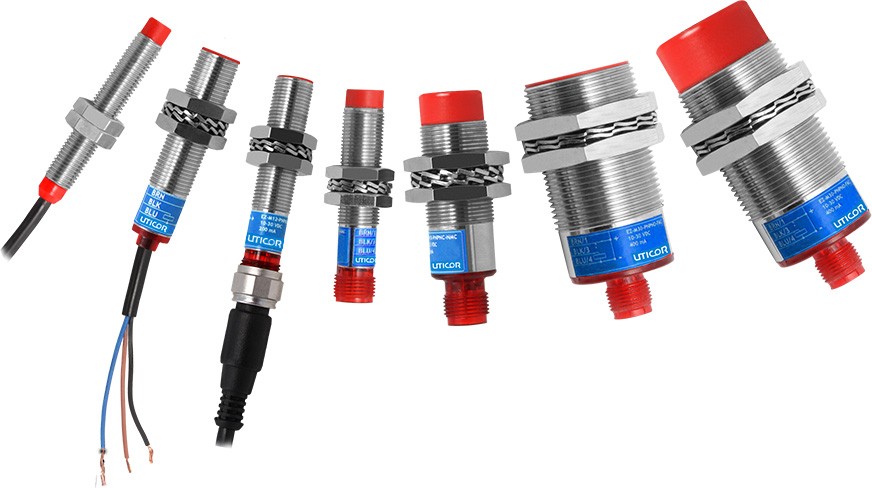Tech
How Does a Proximity Switch Work? Exploring the Principles of Operation

Proximity switches, also known as proximity sensors, are essential components in various industries for object detection and automation purposes. But have you ever wondered how these switches actually work? In this article, we will explore the principles of operation behind proximity switches, shedding light on their functionality. Whether you’re a proximity switch manufacturer or simply interested in learning more, let’s dive into the fascinating world of proximity switch technology.
Principle of Inductive Proximity Switches: Detecting Metals without Contact
Inductive proximity switches detect the presence or absence of conductive metal objects without physical contact. These switches operate based on the principle of electromagnetic induction. When an object enters the detection range of the sensor, it disrupts the electromagnetic field generated by the switch. This disturbance causes a change in the sensor’s oscillating frequency, triggering an output signal to indicate object presence. Proximity switch manufacturers and proximity sensor factories utilize this principle to design and produce inductive proximity switches suitable for various industrial applications.
Capacitive Proximity Switches: Sensing Changes in Capacitance
Capacitive proximity switches are capable of detecting both conductive and non-conductive objects. These switches work based on changes in capacitance when an object enters the sensor’s detection range. When an object with a different dielectric constant enters the sensing area, it alters the capacitance of the switch. This change is detected by the sensor, which then triggers an output signal. Proximity switch manufacturers collaborate with proximity sensor factories to develop and optimize capacitive proximity switches for applications such as liquid level detection and object presence sensing in industrial automation.
Magnetic and Reed Switches: Utilizing Magnetic Fields
Magnetic proximity switches, including reed switches and hall-effect sensors, rely on magnetic fields for object detection. These switches react to the presence or absence of ferromagnetic objects. When a ferrous object enters the detection range, it alters the magnetic field, leading to a change in the switch’s output. Magnetic proximity switches are commonly used in applications such as proximity detection on conveyors, speed sensing in motors, and position sensing in pneumatic cylinders.
Photoelectric Proximity Switches: Emission and Detection of Light
Photoelectric proximity switches utilize the emission and detection of light to sense the presence of objects. These switches emit a beam of light, which is then reflected or interrupted by the presence or absence of an object. The sensor detects the change in light intensity and triggers an output signal accordingly. Photoelectric proximity switches come in various forms, such as through-beam sensors, retro-reflective sensors, and diffuse reflection sensors. Proximity switch manufacturers collaborate with proximity sensor factories to produce a variety of photoelectric proximity switches suitable for object detection in industrial automation.
Ultrasonic Proximity Switches: Utilizing Sound Waves
Ultrasonic proximity switches operate based on the reflection of sound waves. These switches emit ultrasonic waves and measure the time it takes for the waves to bounce back after hitting an object. By calculating the time of flight, the sensor can determine the distance to the object. Ultrasonic proximity switches offer advantages such as long sensing distances, resistance to environmental conditions, and the ability to detect transparent objects. They find applications in presence detection, distance measurement, and object positioning in industrial automation.
Collaborating with Proximity Sensor Manufacturers
Proximity switch manufacturers collaborate closely with proximity sensor factory to develop and produce high-quality switches. The expertise and knowledge of these manufacturers ensure that proximity switches are designed to meet the demands of various industries. Proximity sensor factories, equipped with advanced technologies and quality control measures, play a crucial role in the precise manufacturing and calibration of proximity switches.
Conclusion
Proximity switches operate based on various principles, including electromagnetic induction, capacitance changes, magnetic fields, light emission, and sound wave reflection. Understanding the principles of operation behind proximity switches allows us to appreciate their functionality and applications in industrial automation. Proximity switch manufacturers and proximity sensor factories collaborate to develop and produce proximity switches that meet the diverse needs of different industries. Whether it’s inductive, capacitive, magnetic, photoelectric, or ultrasonic proximity switches, each type brings its own advantages and caters to specific detection requirements. By delving into the principles of operation, we can better understand the fascinating technology behind proximity switches and the role they play in advancing automation in different industries.
Kenneth is a proud native of sydney, born and raised there. However, he pursued his education abroad and studied in Australia. Kenneth has worked as a journalist for almost a decade, making valuable contributions to prominent publications such as Yahoo News and The Verge. Currently, he serves as a journalist for The Hear Up, where he focuses on covering climate and science news. You can reach Kenneth at [email protected].










